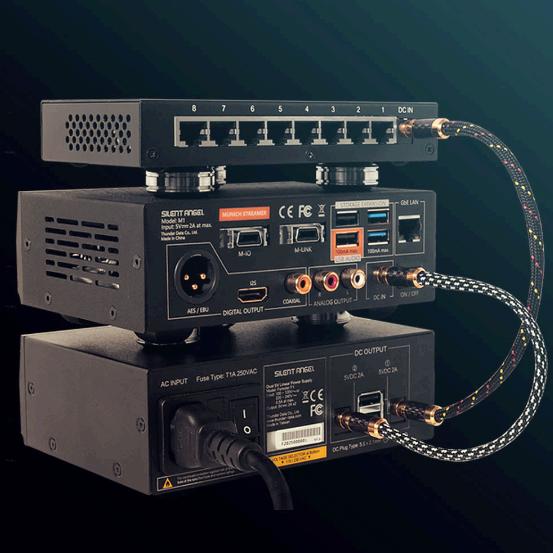
2 minute read
MUNICH M1 & FORESTER F1
burgeoning symbiotic combination clearly sets us in the time of GAMA.
I’ve recently come across a company that has fully engaged in making GAMA more accessible to us all from the perspective of technology, high fidelity, and toward the discovery and enjoyment of that universe of music. That company is called Silent Angel, which seems a most appropriate moniker for the task it now undertakes.
Advertisement
To date, I have reviewed their stellar Rhein Z1 streamer and Forester F2 Linear Power Supply, which together rose to the level of our GoldKeyNote Award, no small feat. Today I review its younger siblings, its baby brothers— Silent Angel Munich M1 and Forester F1— which resemble Tiny Tots in relative size. But how do these Tiny Tots sound?
REFRAIN: Unlike most reviews, this review will be non-sequential, as it will start, below, with how the equipment actually sounds and not the process of physically “undressing” it and/or laying out its various parts, specifications, etc. Think of this review then, as a non-linear movie—Memento, Kill Bill, Arrival, Eternal Sunshine of the Spotless Mind, The Terminator, In the Shadow of the Moon, The Queen’s Gambit, etc—that, likewise, starts at the end and winds its way to the beginning.
The Sound
As I mentioned in the write-up of the HeadAmp GS-X Mini relative to its
“older”sibling—Blue Hawaii Special Edition E/HPA—“The beautifully constructed ‘apple’ does not, apparently, fall far from its technological tree.”
The overall sound of the Munich M1 mirrors this in many ways and embodies good transparency and resolution and detail, especially so for the price. This too was a trademark of its siblings. However, the M1 was not quite able to broach the exceptional in terms of sound. One imagines at its construction/price point that that was not its purpose. Once the Munich M1 was coupled to the Forester F1 Linear Power Supply (combined pricing: $2,049), however, the duo’s collective abilities rose very very nicely and led to many enjoyable and engaging listening sessions.
The Silent Angel Munich M1 and Forester F1 volumetric cube—their soundstage—or how they recreate the original venue of a given package of information—track, song, album, etc.—is quite good and very musical. Staging— positioning, spacing, layering,—is also quite good or rather exemplary for an entry-level product. And everything, and I mean everything, improved once the Forester F1 power supply was linked to the Munich M1.
The Silent Angel Munich M1 ($1,199) and Forester F1 ($850) were paired for review with the Border Patrol SE-i and the DENAFRIPS
Pontus II DACs. The headphone amps employed were the Aurorasound HEADA and the HeadAmp GS-X Mini. Headphones used were the Abyss AB1266 Phi TC, the ZMF
Atrium, the ZMF Vérité, and the Meze LIRIC. Audience Front Row wires and AntiCable and via the Munich M1 alone is good, yet the weight of the prior and more expensive Silent
I repeat one of the bass tracks that was used with the Silent Angel Rhein Z1 and Forester
F2 combo— Mercedes Sosa’s, Misa Criolla (Universal Music Argentina S.A.). The playback and the choir is more ephemeral from the perspective of weight.
Connecting the Forester F1, however, provides greater bass weight that is now







